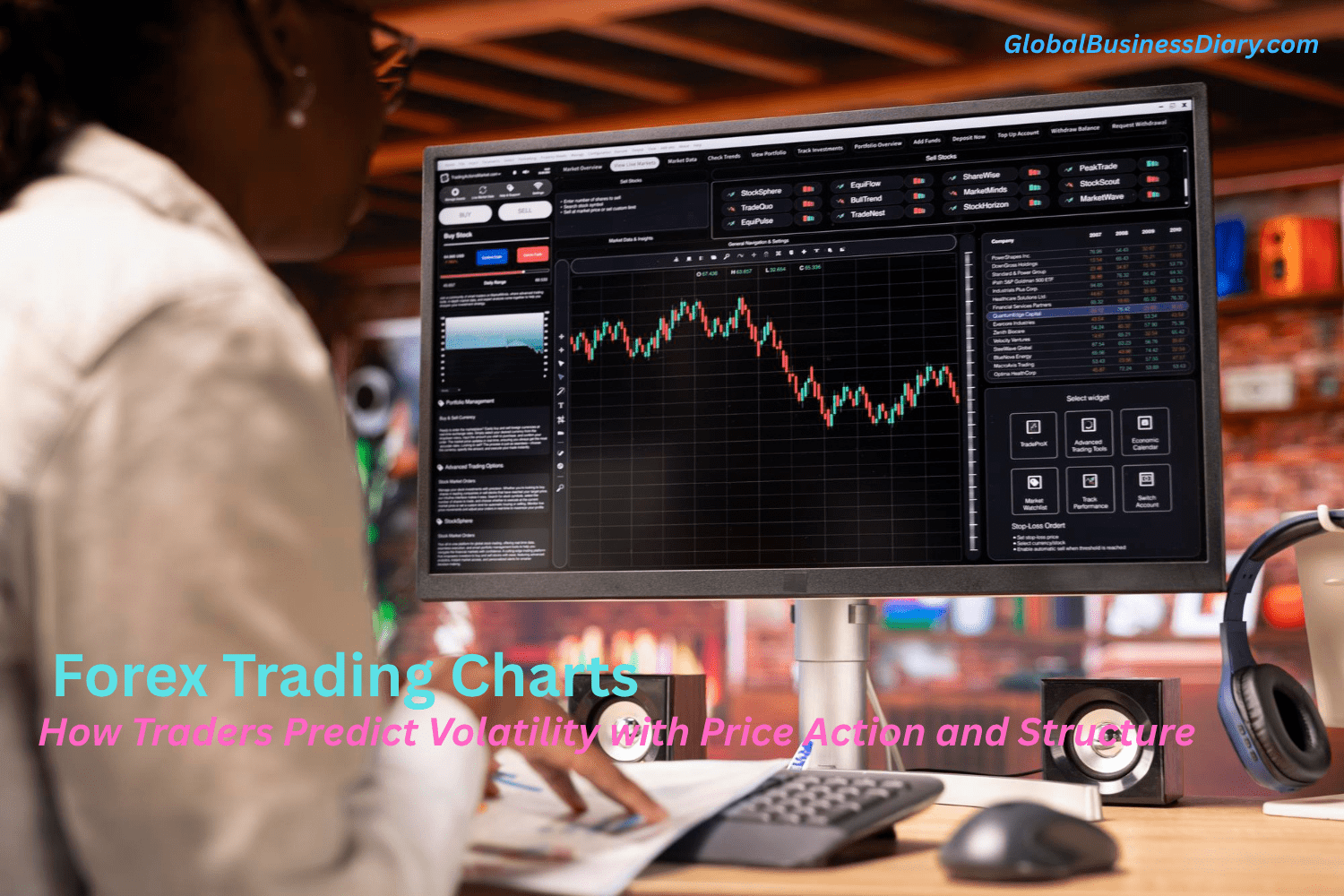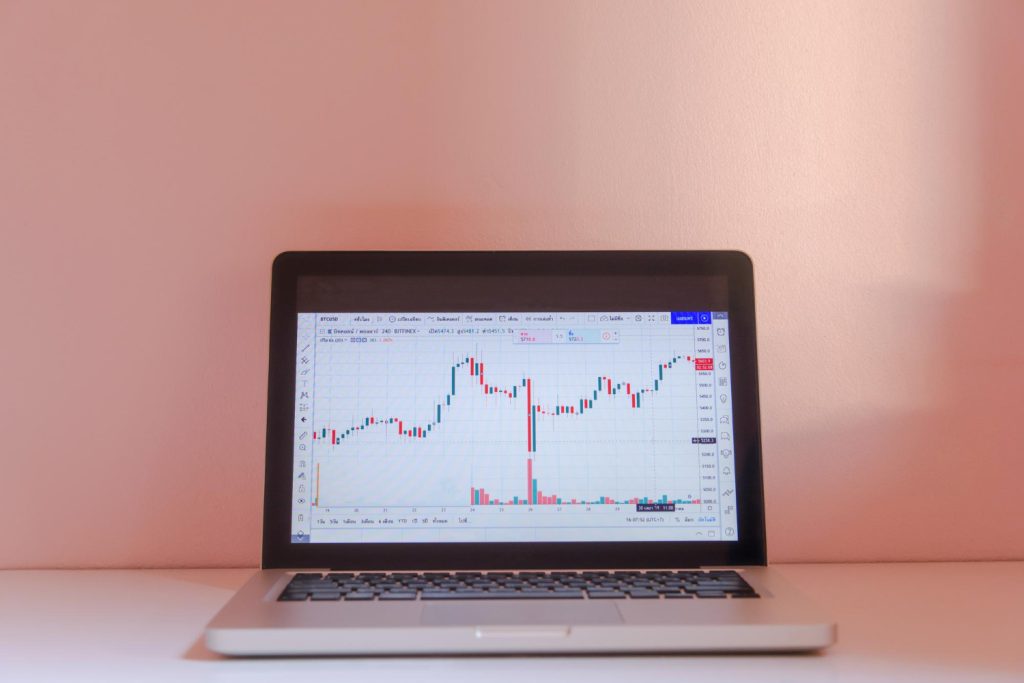Forex Trading Charts: How Traders Predict Volatility with Price Action and Structure

In the world of forex trading, volatility presents risk and opportunity both at the same time. It can create substantial profits and losses within minutes, making it one of the riskiest platforms to trade in. However, professional traders don’t rely on guesswork; instead, they make it a science and study the market structure and price action to anticipate high-volatility zones before they materialise.
In this article, we will discuss how traders utilize forex trading charts, price patterns, and technical confluence to stay ahead of the market before it becomes volatile. These insights will help you to gain experience and form an understanding of how markets function.
Forex Trading Charts: The Canvas of Market Behavior
Forex Trading charts present a visual record of how forex prices have moved over time. They present a detailed report on emerging trends, resistance, and areas of indecision. You can see the price in a weekly or hourly fashion.
Among all the forex chart types, candlestick charts are one of the most commonly used. Each candle encapsulates the open, high, low, and close of a session, showcasing a detailed snapshot of the market sentiment.
Furthermore, you can use multi-timeframe analysis to build context, both long-term and short-term, to avoid making isolated decisions.
To learn more about reading and interpreting different forex chart types, including how candlesticks work, visit this link for a comprehensive breakdown.

Market Structure: The Blueprint for Forecasting
“Market structure” refers to how prices form different patterns over time. In uptrends, this structure consists of higher highs and higher lows, and in downtrends, lower highs and lower lows. These formations give rise to key zones where price is statistically likely to react.
Common Structural Zones:
- Trendlines and Channels: Diagonal guides that define a market’s directional flow.
- Range Boundaries: In sideways markets, the high and low of the range act as triggers for potential breakouts or breakdowns
- Support and Resistance: Horizontal zones where price has reversed or paused in the past.
When the structure converges with macroeconomic data or psychological price levels, it enhances a trader’s ability to anticipate market behavior with more confidence.
Identifying Volatility Zones on the Forex Trading Chart
Volatility zones are areas where price moves swiftly, often with increased momentum and trading volume. These typically occur around:
- Retests of broken support or resistance (a common price action setup)
- Breakouts from consolidation (e.g., triangle or flag patterns)
- Economic events that coincide with key technical areas
Professional traders wait for confirmation through price action. For instance, a bullish engulfing candle at a support zone in an uptrend might signal a strong buying opportunity. On the other hand, a bearish pin bar near resistance may hint at an impending reversal.
Volume, Liquidity, and Hidden Clues
In forex, traditional volume data is limited due to its decentralized nature. However, experienced traders can still infer liquidity and intent through price action alone.
Here’s how:
- Repeated wicks in the same zone suggest active buyer and seller interest
- Sharp spikes or whipsaws often point to stop hunts or liquidity grabs.
- Tight consolidations may indicate the absorption of orders before a breakout
These liquidity pools sometimes reside beyond recent swing highs/lows, where stop losses are placed. When these stops are triggered, they can fuel aggressive moves known as “stop runs.” Traders manage risks after identifying these liquidity zones to manage risks when the market takes momentum.
Price Action in Practice: A Case Study
Let’s create a scenario where GBP/USD is trading within an ascending channel. The pair pulls back toward the lower boundary of the channel, which further aligns with a horizontal support zone and the 50-day moving average.
Here’s the breakdown:
- Volatility Zone: The confluence area could trigger a sharp upside movement if defended.
- Structure: Price is respecting the ascending channel
- Confluence: Support level + moving average + bullish candle
A professional trader might enter long here, placing a stop just below the pin bar and targeting the top of the channel. If the level breaks instead, it signals a shift in structure and sets up a volatility zone in the opposite direction.
Practical Tips for Applying Structure and Price Action
If you want to start using these techniques in your own trading, keep these principles in mind:
1. Start with Market Structure
First, identify the market trend, current range, and key support/resistance levels. This will help you see the bigger picture that the forex market presents.
2. Seek Technical Confluence
The strongest trade setups occur when multiple factors align, like horizontal levels, moving averages, trendlines, and price platforms.
3. Use Multi-Timeframe Analysis
What looks like a breakout on the 15-minute chart could be a minor pullback on the 4-hour chart. Always zoom out for clarity.
4. Wait for Price Action Confirmation
Use candlestick patterns or momentum clues to confirm that the market agrees with your bias.
5. Prioritize Risk Management
Even the best volatility zones can lead to false breakouts. Always define your stop-loss level and calculate position size accordingly.
Conclusion: Structure Leads, Volatility Follows
Professional traders rely on forex trading charts to interpret market structure and price action to get a clear perspective on volatility and how it will act later. The forex charts keep the trader a step ahead of others and stop when the market falls or seek opportunities when the price skyrockets. Thus, for every trader, it is necessary to read the forex trading chart to know where the forex market will stall or go next. That way, they can strategize and come up with a better plan to get the best out of the forex market.
#Disclaimer: The information provided on this blog is for educational and informational purposes only and should not be construed as financial advice. I am not a licensed financial advisor. Any investment decision you make is at your own risk, and you should consult with a qualified financial advisor before making any investment decisions. This site may contain affiliate links, and I may earn a commission at no additional cost to you.
Read Also:













